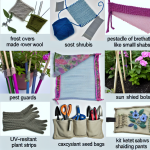Embracing Vertical Gardening
Vertical gardening is a transformative approach for those looking to maximize space and visually enrich their gardening areas. Whether you’re working with a small balcony or a sprawling yard, vertical gardening can bring a new level of productivity and beauty to your gardening efforts. Here’s how to harness its full potential:
Choosing the Right Structure
A successful vertical garden begins with the right support structure. Consider the following:
- Trellises: Ideal for vining plants like tomatoes, peas, and beans. Ensure the trellis is sturdy enough to support the mature weight of these plants.
- Arbors and Arches: Perfect for creating an inviting passageway through your garden using climbing roses, clematis, or wisteria.
- Wall-Mounted Planters: Great for herbs and leafy vegetables. Opt for modular systems that allow for easy rearrangement and maintenance.
- Freestanding Frames: These can host various containers and pockets. They’re excellent for renters who can’t modify their walls.
Soil and Plant Selection
Vertical gardens require different considerations for soil and plant choices:
- Lightweight, Well-Draining Soil: Use a high-quality potting mix enriched with compost. Avoid garden soil, which may be too heavy and compact for vertical applications.
- Plants: Select plants that thrive in the vertical environment and consider their mature sizes to avoid overcrowding. Some great options include:
- **Herbs:** Thyme, basil, oregano, and mint. They thrive in confined spaces and offer aromatic benefits.
- **Leafy Greens:** Lettuce, spinach, and kale. These can be harvested continuously, maximizing yield.
- **Vining Vegetables:** Cucumbers, pole beans, and indeterminate tomatoes. Their natural climbing abilities make them perfect for vertical structures.
- **Flowers:** Nasturtiums, morning glories, and petunias. They add color and attract beneficial pollinators.
Watering Techniques
Vertical gardens often have different watering needs than traditional gardens:
- Drip Irrigation: Install a drip irrigation system to deliver precise amounts of water to each plant, minimizing waste and ensuring even moisture.
- Self-Watering Containers: Consider using containers with built-in reservoirs. These help maintain consistent soil moisture levels.
- Manual Watering: If manually watering, start from the top and work your way down to ensure even distribution. Use a watering wand for better control.
Maintenance Tips
Maintaining a vertical garden requires regular attention:
- Pruning: Regularly trim back overgrown leaves and stems to promote healthy airflow and reduce the risk of disease.
- Feeding: Feed your vertical garden with a balanced, water-soluble fertilizer once a month. Vertical gardens may deplete nutrients more quickly than traditional beds.
- Pest Management: Keep an eye out for pests such as aphids and spider mites. Use neem oil or insecticidal soap for control, if necessary.
- Rotation: Occasionally rotate plants in wall-mounted systems to ensure even light exposure and growth.
By implementing these vertical gardening strategies, you can create a lush, productive garden in even the most constrained spaces. Happy gardening!




GIPHY App Key not set. Please check settings